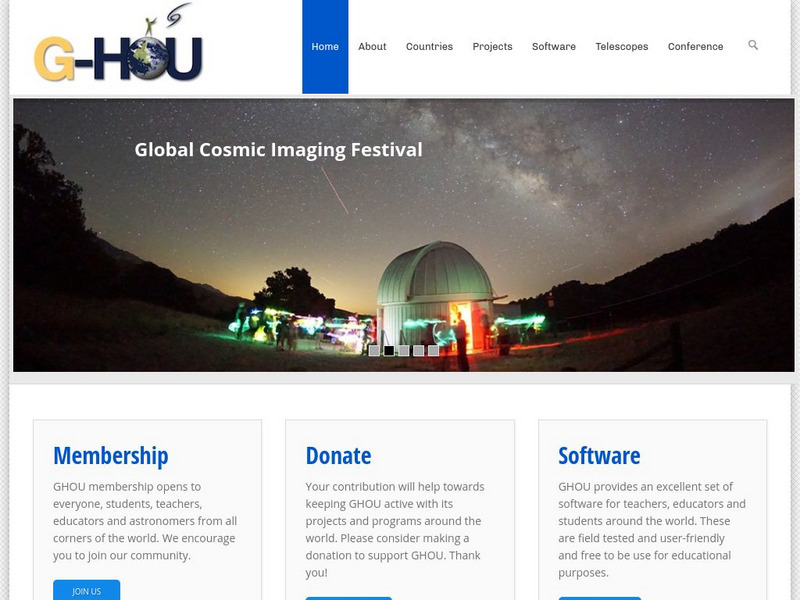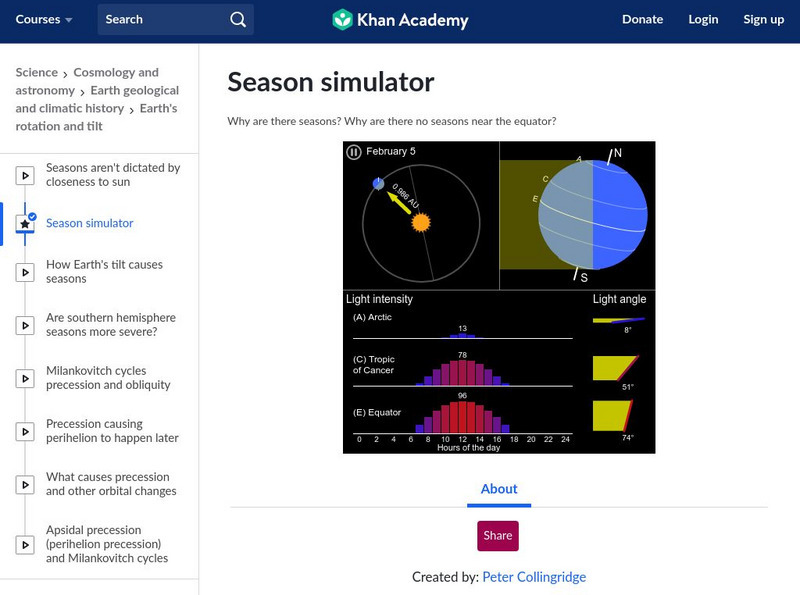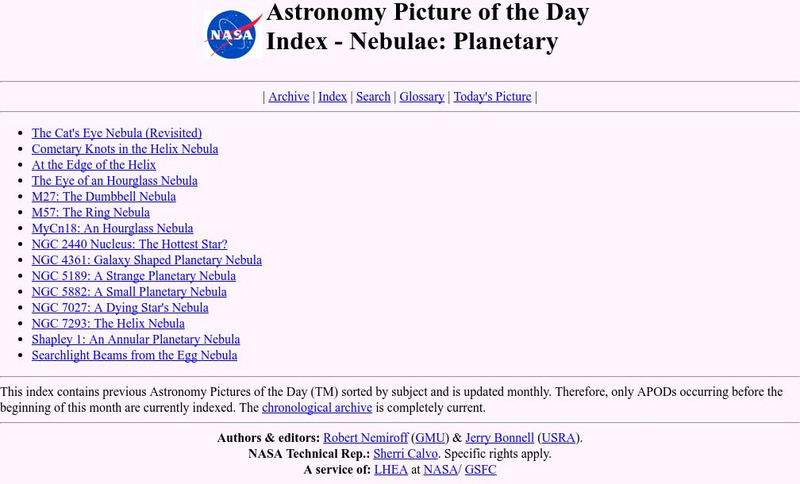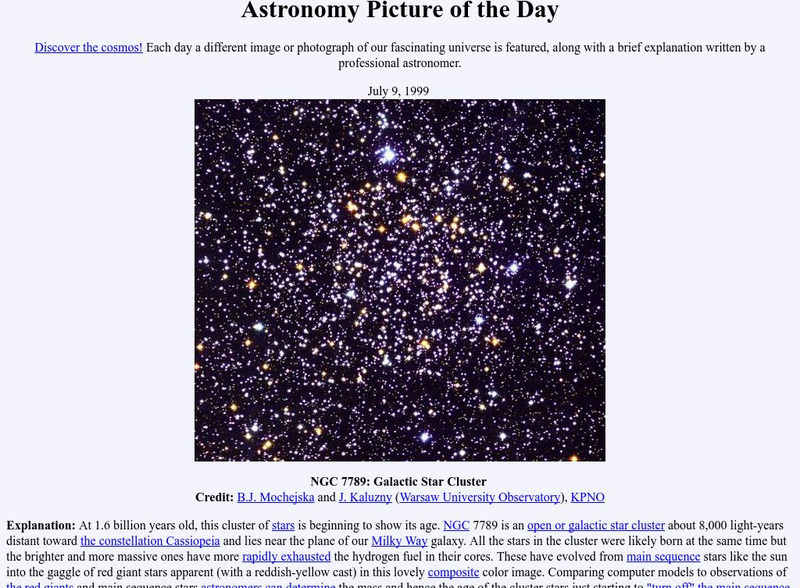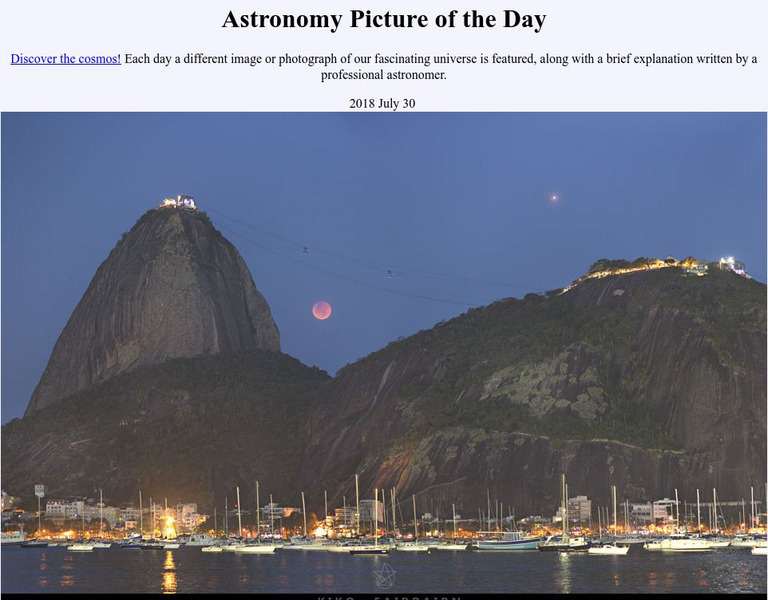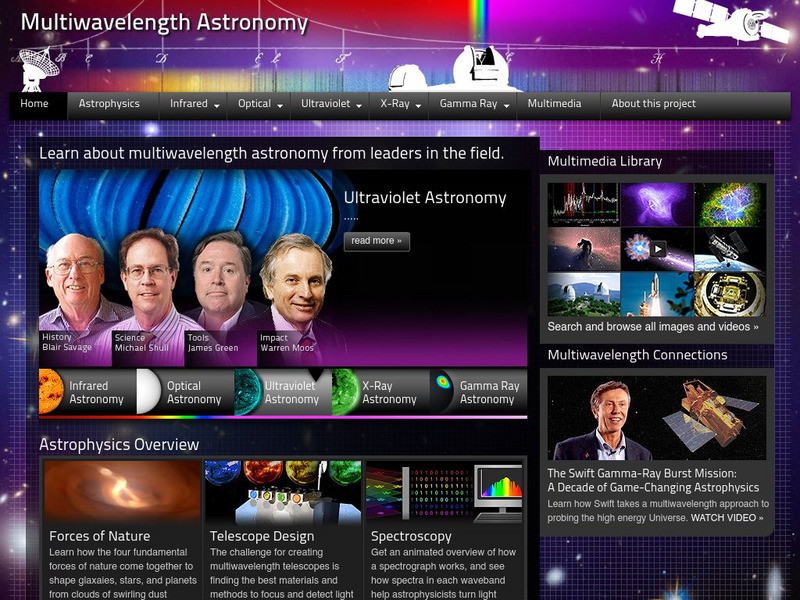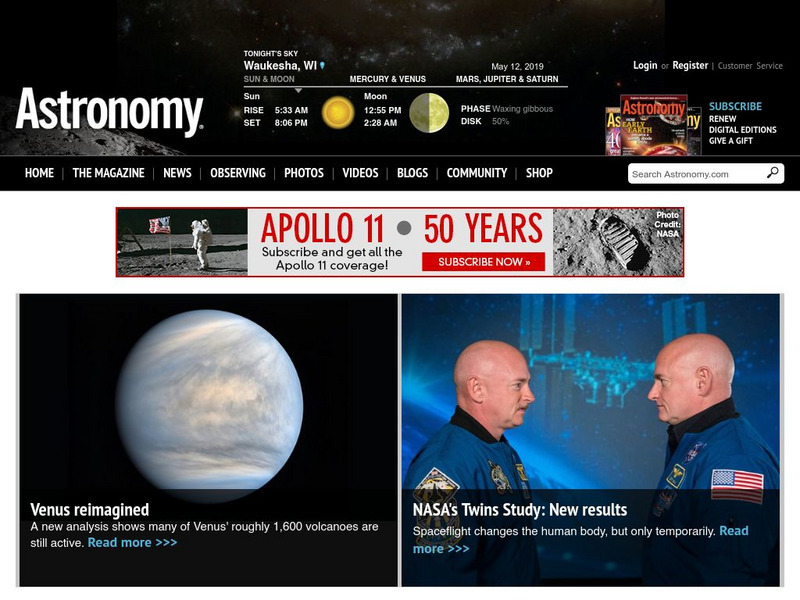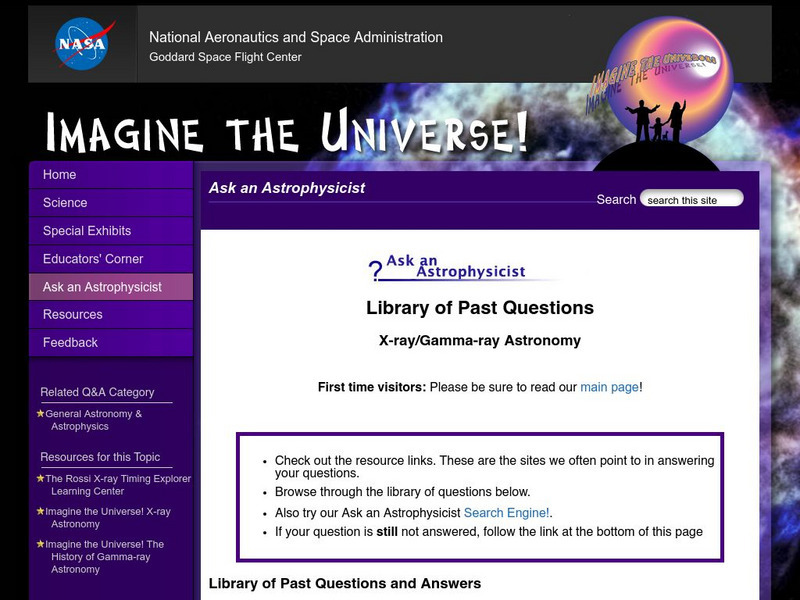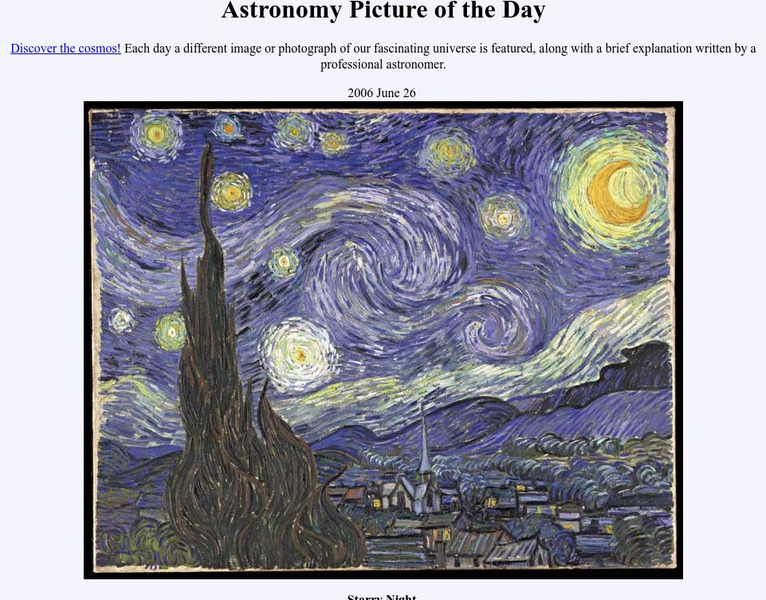Other
Elementary Science Program: Astronomy, Gr. 5 8
"Astronomy is the science that studies the Earth, the Moon and other objects in space. It has helped us discover our place in the physical universe. It is still making discoveries." This landing page gives options for students and...
American Museum of Natural History
American Museum of Natural History: O Logy: What's the Big Idea? Astronomy
An introduction to key concepts about the science of astronomy. With interactive flash cards that open in new windows to help you learn more.
Other
History of Astronomy in Uppsala: Anders Celsius
A lengthy account of the life and work of Anders Celsius. Describes his studies of astronomy and his development of the Celsius temperature scale.
Other
Astronomylinks
This is a very comprehensive site on the subject of Astronomy and Astrophysics. The site has links to many sites on topics including astronauts, astronomy, astrophysics, education, jobs, etc.
Other
Hands on Universe (Hou)
HOU trains teachers in how to use astronomy tools and its curriculum materials for science education. HOU is now part of GHOU, or Global Hands-On Universe, and is linked to astronomy scientists in countries all over the world. A world...
Khan Academy
Khan Academy: Cosmology and Astronomy: Season Simulator
This season simulator takes Earth through an entire year cycle allowing the viewer to observe the tilt of the Earth and the intensity of the sunlight.
Cornell University
Cornell University: Astronomy: Frequently Asked Questions
Definintions for pulsars, millisecond pulsars, the evolution of pulsars, neutron stars and "Black Widows." Features related links.
NASA
Nasa: Astronomy Picture of the Day: Crab Nebula and Geminga in Gamma Rays
Explains that pulsars would be the brightest objects in the sky if we could see gamma-rays.
NASA
Nasa: Astronomy Picture of the Day: Nebulae Planetary
At this resource several pictures of nebulae are available with informative caption. Related links and other resources.
NASA
Nasa: Astronomy Picture of the Day: Giant Stars
Image of a group of red giant stars are seen in an image from the edge of the plane of the Milky Way. The evolution of these stars is explained. Many embedded links contained in the text to related topics.
NASA
Nasa: Astronomy Picture of the Day:
A different image is featured each day along with descriptive narrative. NASA offers different and sometimes unexpected views of our Earth and the universe.
University of Chicago
University of Chicago Library: Multiwavelength Astronomy
Get the inside story on how Astrophysics emerged as a field of study from personal stories of scientists that helped to revolutionize our view of the Universe.
Other
Astronomy.com
Astronomy.com offers daily astronomy news, a photo gallery, hobby news, The Sky Online, telescope information, NASA mission guides and much more.
NASA
Nasa: Imagine the Universe: X Ray, Gamma Ray Astronomy
Frequently asked questions are answered about gamma rays.
Georgia Department of Education
Ga Virtual Learning: Astronomy: The Earth
In this interactive tutorial students will learn what causes the seasons, diurnal cycles and how the constellations move through the sky. Learn we are able to see other planets and how astronomical events affected life on the Earth.
NASA
Nasa: Imagine the Universe: Gamma Ray Astronomy Satellites and Missions
"We present the many satellites which have detected electromagnetic radiation through the 1960s, 70s, 80s, and 90s." Visit this site to read more about the development of satellites throughout the history of gamma-ray astronomy. Graphics...
NASA
Nasa: Imagine the Universe: Welcome to the World of Multiwavelength Astronomy!
This Imagine the Universe site provides an introduction into the multiwavelength universe and astronomy. Site provides graphics, links to a quiz, facts on this topic as well as teacher resources.
NASA
Nasa: Astronomy Picture of the Day: "The Starry Night" by Vincent Van Gogh
Discover why the scientists at NASA awarded Van Gogh's famous painting of the night sky, "The Starry Night," a spot on its astronomy-picture-of-the-day site.
Ducksters
Ducksters: Astronomy for Kids: Galaxies
Kid's learn about the science of Galaxies. Large groups of stars such as the Milky Way throughout the universe are an interesting part of astronomy.
Ducksters
Ducksters: Astronomy for Kids: The Planet Jupiter
Kids learn about the planet Jupiter of the Solar System including fun facts, mass, day, year, and distance from the Sun. Astronomy for kids and teachers.
Ducksters
Ducksters: Astronomy for Kids: The Planet Mars
Kids learn about the planet Mars of the Solar System including fun facts, mass, day, year, and distance from the Sun. Astronomy for kids and teachers.
Ducksters
Ducksters: Astronomy for Kids: The Planet Mercury
Kids learn about the planet Mercury of the Solar System including fun facts, mass, day, year, and distance from the Sun. Astronomy for kids and teachers.
Ducksters
Ducksters: Astronomy for Kids: The Planet Neptune
Kids learn about the ice giant planet Neptune of the Solar System including fun facts, mass, day, year, and distance from the Sun. Astronomy for kids and teachers.
Other popular searches
- Astronomy and Space Science
- Astronomy Vocabulary
- Planets and Astronomy
- Astronomy Activity
- Science Astronomy
- Ancient Astronomy
- Astronomy Lesson Plans
- History of Astronomy
- Space Science Astronomy
- Space and Astronomy
- Astronomy Navigation
- Astronomy History






